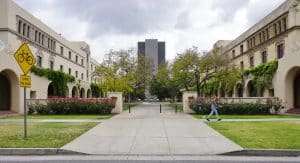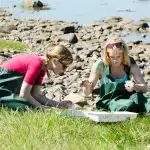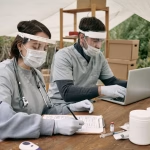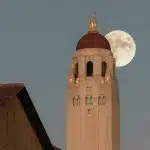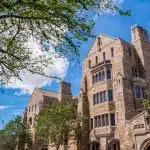The California Institute of Technology (Caltech) runs on the quarter system, which splits the academic year into four periods. Each quarter is ten weeks long, with classes occurring in the fall, winter, spring, and an optional summer. In short, classes at Caltech move pretty quickly.
You’ll need to be aware of important dates to stay organized and manage your workload. Knowing class start dates, midterms, finals, and deadlines in advance reduces stress and ensures you don’t miss important events like holidays and add/drop periods.
In this blog, we’ll break down Caltech’s academic calendar and highlight key dates and deadlines to help you stay on track throughout the year.
- The Caltech Quarter System
- Important Dates for AY 2024-2025
- Keeping Track of Caltech’s Calendar of Events
- How to Survive the Caltech Quarter System
- Frequently Asked Questions
- Takeaways
The Caltech Quarter System
Caltech follows a quarter system, with the academic year starting in late September and ending in June. The average course load of students is typically about 45 units per ten-week term, which is about four to five classes. It may sound like a lot, but a typical course usually involves three hours of class time and six hours of homework per week, adding up to nine units.
Fall term
The fall term usually begins during the last week of September and runs through mid-December. It starts with the first day of classes, followed by the Thanksgiving holiday, and ends with final exams just before Christmas and a winter recess that lasts about three weeks. During this time, you’ll attend classes, complete projects, and engage in other academic activities.
Winter term
The winter term at Caltech kicks off after New Year’s Day, bringing a fresh start to the academic year. Midterms happen in early February, followed by another month of classes and projects. Like the fall quarter, you’ll have a study period to prepare for finals before the term ends mid-March. After that, you’ll get a week-long spring break to relax before the next term starts.
Spring term
The spring term runs from April to June, giving you plenty of time to take classes and work on assignments. After about a month of regular coursework, midterm exams will be at the end of April. You’ll have another month of classes and activities before a week of study period to help you prepare for finals in early June.
Optional summer term
While Caltech follows a quarter system, there are no classes during the summer quarter. But Caltech students rarely spend the summer just relaxing! With 10 weeks of free time, many take advantage of the break to participate in research projects through the Summer Undergraduate Research Fellowship (SURF), which we’ll discuss more later. Others use the time to gain experience through internships or take advantage of available travel grants.
Important Dates for AY 2024-2025
Knowing key dates can make it easier to manage your schedule and stay on track. Below are the important events to look out for during the 2024–2025 academic year at Caltech.
Fall term 2024
| Date/s | Event |
| September 23-27 | New student orientation |
| September 30 | First day of classes (starts at 8:00 a.m.) |
| October 18 | Last day to add courses or clear incomplete grades |
| October 30 – November 5 | Midterm exams |
| November 20-21 | Last day to drop courses, switch to pass/fail, or change sections |
| November 21 – December 6 | Registration for winter term 2024-25 |
| November 28-29 | Thanksgiving holiday |
| December 6 | Last day of classes |
| December 7-10 | Study period |
| December 11-13 | Final exams |
| December 14 – January 5 | Winter break |
Winter term 2025
| Date/s | Event |
| January 6 | First day of classes (starts at 8:00 a.m.) |
| January 20 | Martin Luther King Jr Day |
| January 24 | Last day to add courses or clear incomplete grades |
| February 5-11 | Midterm exams |
| February 17 | Presidents’ Day |
| February 26 | Last day to drop courses, switch to pass/fail, or change sections |
| February 27 – March 12 | Registration for spring term 2024-25 |
| March 12 | Last day of classes |
| March 13-16 | Study period |
| March 17-19 | Final exams |
| March 20-30 | Spring break |
Spring term 2025
| Date/s | Event |
| March 31 | First day of classes (starts at 8:00 a.m.) |
| April 18 | Last day to add courses or clear incomplete grades |
| April 30 – May 6 | Midterm exams |
| May 21 | Last day to drop courses, switch to pass/fail, or change sections |
| May 22 – June 6 | Registration for fall term 2025-26 |
| May 26 | Memorial Day |
| May 30 | Last day for seniors |
| May 31 – June 3 | Study period for seniors |
| June 4-6 | Final exams for seniors |
| June 6 | Last day of classes for undergraduates |
| June 7-10 | Study period for undergraduates |
| June 11-13 | Final exams for undergraduates |
| June 13 | Graduation (starts at 10:00 a.m.) |
Summer term 2025
| Date/s | Event |
| June 16 | Summer term begins |
| June 19 | Juneteenth |
| July 4 | Independence Day |
| August 30 | End of term |
Things to remember
Caltech’s academic year runs on a quarter system, meaning each term lasts about 10 weeks and moves quickly. Fall classes start in late September, but if you’re a new student, you’ll have orientation the week before. This is a great time to settle in, meet your classmates, and get a feel for campus life.
Midterms come about a month into the term, and around this time, you’ll also want to keep track of deadlines for adding or dropping courses in case you need to adjust your schedule. The term wraps up with a study period before finals, and then you get a solid three-week winter break to relax, catch up on sleep, and enjoy the holidays before the next term.
Winter term follows the same fast pace. You’ll have midterms halfway through the term, with finals coming up quickly after that. But, hey! At least you have spring break to look forward to. It’s about a week long, enough time to recharge before the year’s final stretch.
Finally, spring term runs from early spring to early summer. By the time midterms roll around, you’ll probably have settled into a routine. If you’re a senior, you’ll finish a bit earlier than everyone else, but undergrads stick it out until finals wrap up in early summer.
Graduation marks the official end of the academic year and celebrates the hard work of the graduating class. After that, the summer term begins. While there are no regular classes over the summer, many Caltech students (like the overachievers they are) use the time for research through the Summer Undergraduate Research Fellowship (SURF), internships, or travel opportunities.
What is the Summer Undergraduate Research Fellowship (SURF)?
The Summer Undergraduate Research Fellowship or SURF program is one of the “crown jewels” of Caltech. It’s been around since 1979, allowing students to spend 10 weeks working on real research with expert mentors.
You apply by pitching a project idea, and if you get in, you’ll get paid $7,950 for the summer. Plus, there are cool perks like faculty talks, career workshops, and social events. It all wraps up with a technical paper and an oral presentation at one of several SURF Seminar Days. Most students participate in SURF at least once while at Caltech, and many do it more than once.
If you decide to participate in SURF this year, it starts on June 17, 2025. Make sure to submit your application, including your research proposal, by the third week of February.
Keeping Track of Caltech’s Calendar of Events
As you know, Caltech’s quarter system moves fast, so staying organized from day one will help you stay on track.
A good place to start is the Caltech academic calendar. It’s updated every year and lays out all the dates you need to know, including the first and last day of classes, midterm and final exam periods, and registration windows. You’ll also find dates for breaks and holidays, which are just as important for balancing your workload and taking time to recharge.
For campus events, Caltech Today is a great resource. It’s regularly updated with announcements, academic updates, social events, and other opportunities happening on campus.
You can also sign up for the weekly Ion Caltech email, which goes out every Monday. It features news, announcements, and events pulled from Caltech Today and the Caltech home page, so you’re constantly updated about what’s happening on campus.
And, of course, every college student has a phone (obviously). A lot of students use their phones to set reminders for deadlines, exam dates, and holidays to stay on top of the Caltech academic calendar.
How to Survive the Caltech Quarter System
A quarter system means classes are fast-paced, and assignments and exams can sneak up on you. Try following these tips to help you adjust and stay on top of things:
1. Read the syllabus.
The syllabus is your best friend throughout your college life. It has everything you need to know, from test dates and essay instructions to deadlines. And in a fast-paced quarter system, keeping track of everything is even more important.
Save it on your phone, print a copy, or bookmark it on your laptop. Whatever you choose, make sure the information is always available. You’ll have to juggle many things within 10 weeks, and the syllabus will help you stay on top of it all.
2. Avoid procrastinating.
Staying on top of your work is extremely important in a quarter system since there’s not much time to catch up if you fall behind. Try to review your notes and keep up with readings and assignments regularly. Honestly, just 15 to 20 minutes a day can make a huge difference when midterms and finals roll around.
3. Don’t bite off more than you can chew.
The typical course load at Caltech is four to five classes, and there’s a reason why. Each class moves fast and comes with a lot of work.
Signing up for too many classes or activities might be tempting, but the quarter system is intense. Focus on a manageable course load, especially during your first year, so you can adjust to the pace without feeling overwhelmed. You can always add more once you’re ready.
4. Take regular breaks.
With such a jam-packed schedule, it’s easy to forget to take a break. However, constantly pushing yourself can lead to burnout and leave you feeling exhausted in the long run.
Set aside time for activities you enjoy, whether hanging out with friends, working out, or relaxing. Trust me, prioritizing self-care will help you stay focused and do your best in class.
5. Think of the benefits.
The quarter system might be fast-paced, but it does come with some benefits. Focusing on fewer classes at a time gives you a more in-depth learning experience, and the quick turnover means you get to switch things up every three months. If you end up not liking a class, you won’t have to stick with it for long. (Yay!)
Plus, the flexibility makes it easier to adjust your schedule or try new subjects if your interests change. For instance, if you decide to switch majors in February, you can start taking new classes that align with your goals as early as March.
Frequently Asked Questions
1. Is Caltech quarter or semester?
Caltech follows a quarter system, which means the academic year is split into four terms: fall, winter, spring, and an optional summer term. The fall term starts in late September and ends before Christmas, the winter term runs from early January to mid-March, and the spring term lasts from late March or early April through early June. The summer term runs from June to August, with most students participating in research projects.
2. How long is Caltech spring break?
Caltech spring break usually lasts about 10 days, from mid to late March. It’s a chance to relax and recharge before the final stretch of the academic year.
3. When does the academic year start and end at Caltech?
The academic year at Caltech typically starts in late September and ends in mid-June with graduation. Then, there’s a summer break, which gives you time to participate in research projects, sign up for internships, travel, or rest.
Takeaways
- Caltech follows a quarter system that divides the academic year into fall, winter, spring, and an optional summer term.
- Students get several breaks during the year, including Thanksgiving, winter break, and spring break, to recharge and reset.
- The summer term has no regular classes, but many students take part in research through the Summer Undergraduate Research Fellowship (SURF).
- Getting into Caltech is highly competitive. To improve your chances, work with a college admissions consultant to strengthen your application and stand out in the admissions process.

Eric Eng
About the author
Eric Eng, the Founder and CEO of AdmissionSight, graduated with a BA from Princeton University and has one of the highest track records in the industry of placing students into Ivy League schools and top 10 universities. He has been featured on the US News & World Report for his insights on college admissions.


